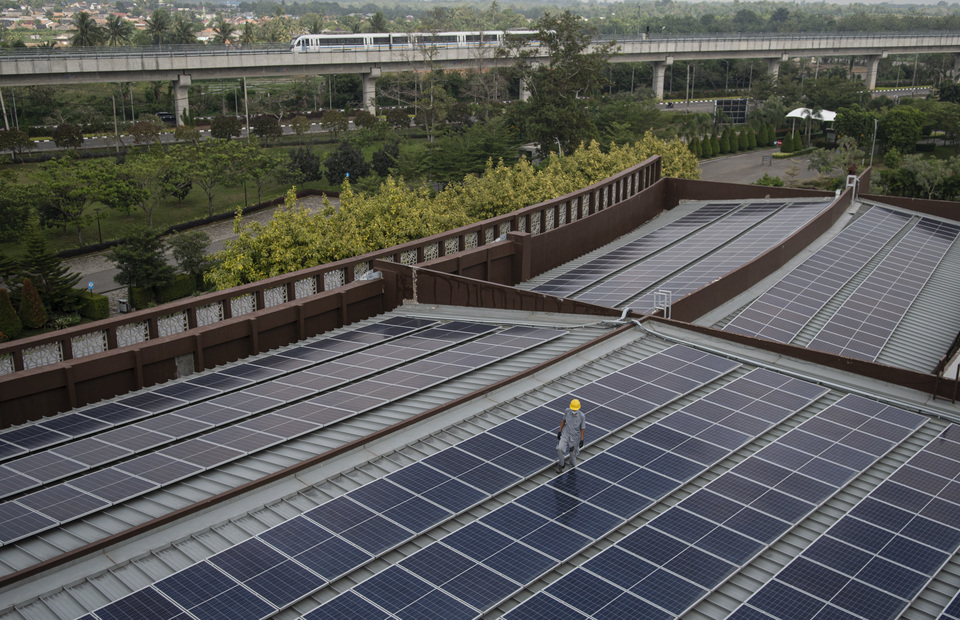Indonesia is stepping up its efforts to reach clean energy targets with the construction of a 145 megawatt (MW) floating solar power plant, set to be the largest in Southeast Asia.
The project, with constructions underway in West Java, secured financing from state utility company Perusahaan Listrik Negara (PLN) and Masdar of United Arab Emirates on Tuesday.
Solar may be Indonesia's best shot of reaching its short-term clean energy target, an energy expert told the Jakarta Globe. The government aims to have 23 percent of energy coming from new and renewable sources by 2025, but by the end of last year, it was only halfway to the target.
Director General of New Renewable Energy and Energy Conservation from the Ministry of Energy and Mineral Resources, Chrisnawan Anditya, said that one of government’s priorities is indeed solar power plants. Besides being fast to create and having a high development potential in the tropical archipelago, they are competitive in price.
In fact, solar panel prices have dropped 60 percent in the last 6 years. With financing schemes from solar developers, Indonesians can even order home panels to be installed for free.
While solar power is now the cheapest it ever was — and the fastest growing renewable energy source worldwide — as of May last year, it amounted to less than 6 percent of Indonesia’s total power generation. The country still depends largely on coal and fossil fuel-fired plants, accounting to some 85 percent of national electricity sources.
On the other hand, the true potential of solar power remains untapped. The country has the potential to generate 207 gigawatts (GW) of solar power, but only around 0.09 GW or less than 0.1 percent has been utilized. The National Energy Policy (KEN) aims to increase solar power generation to 6.5 GW in 2025 and 45 GW in 2050.
The urgency to shift to clean energy isn't just than a matter of fulfilling the 2025 target or the Paris Agreement, to which Indonesia is a signatory.
Today’s atmospheric carbon levels are the highest they have been in hundreds of thousands of years, leading to catastrophic rise in global temperatures.
Lowering carbon emissions cannot be done without reforms within the power sector, which is responsible for nearly two-thirds of emission growth globally.
Source: JakartaGlobe
Author(s): Grace Nadia Chandra, Kezia Kho
Original published date: 04 August, 2021
August 05, 2021













